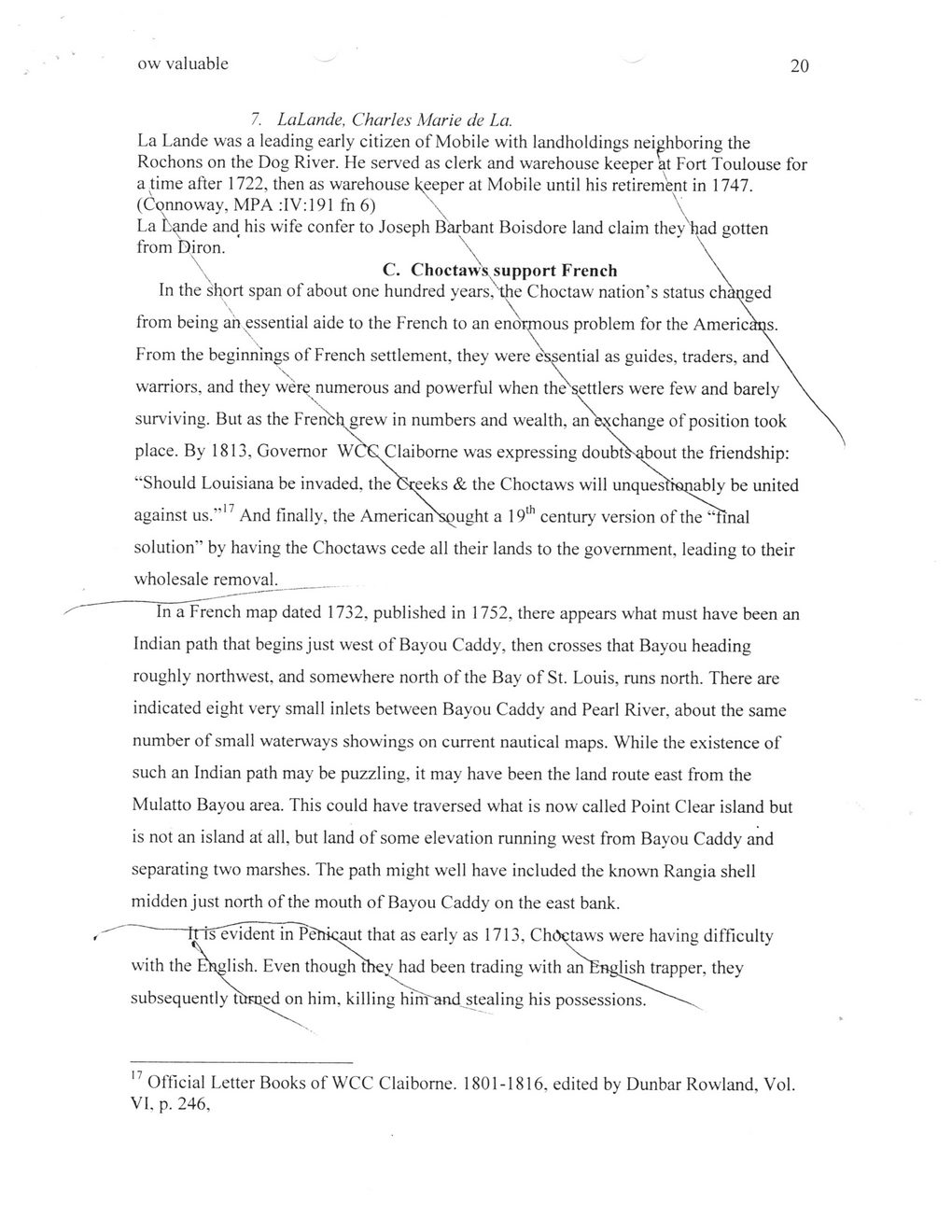This text was obtained via automated optical character recognition.
It has not been edited and may therefore contain several errors.
ow valuable 20 7. LaLande, Charles Marie de La. La Lande was a leading early citizen of Mobile with landholdings neighboring the Rochons on the Dog River. He served as clerk and warehouse keeper at Fort Toulouse for a time after 1722, then as warehouse keeper at Mobile until his retirement in 1747. (Connoway, MPA :IV: 191 fn 6) \ La Lande and his wife confer to Joseph Barbant Boisdore land claim theyxhad gotten from Diron. \ \ \ C. Choctaws support French In the short span of about one hundred years, "the Choctaw nation’s status ch^iged from being an essential aide to the French to an enormous problem for the Americans. From the beginnings of French settlement, they were essential as guides, traders, and warriors, and they were numerous and powerful when thexsettlers were few and barely surviving. But as the Frenbh grew in numbers and wealth, an exchange of position took place. By 1813, Governor WCC Claiborne was expressing doubtVdxmt the friendship: “Should Louisiana be invaded, the Creeks & the Choctaws will unquestromibly be united against us.”17 And finally, the American'squght a 19th century version of the ‘^Tnal solution'5 by having the Choctaws cede all their lands to the government, leading to their wholesale removal. In a French map dated 1732, published in 1752, there appears what must have been an Indian path that begins just west of Bayou Caddy, then crosses that Bayou heading roughly northwest, and somewhere north of the Bay of St. Louis, runs north. There are indicated eight very small inlets between Bayou Caddy and Pearl River, about the same number of small waterways showings on current nautical maps. While the existence of such an Indian path may be puzzling, it may have been the land route east from the Mulatto Bayou area. This could have traversed what is now called Point Clear island but is not an island at all, but land of some elevation running west from Bayou Caddy and separating two marshes. The path might well have included the known Rangia shell midden just north of the mouth of Bayou Caddy on the east bank. iTTsevident in PeTik^iut that as early as 1713, ChOctaws were having difficulty with the EHglish. Even though thev had been trading with anEnghsh trapper, they subsequently tbnjed on him, killing hirrTand stealing his possessions. 17 Official Letter Books of WCC Claiborne. 1801-1816, edited by Dunbar Rowland, Vol. VI, p. 246,

Old Spanish Trail Document (060)